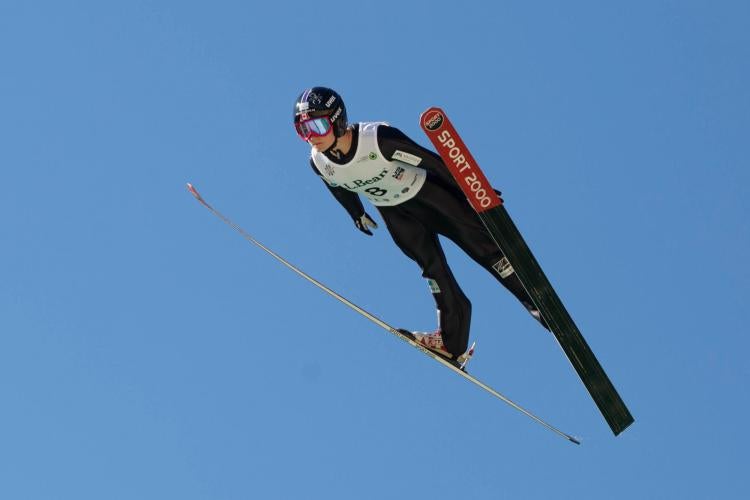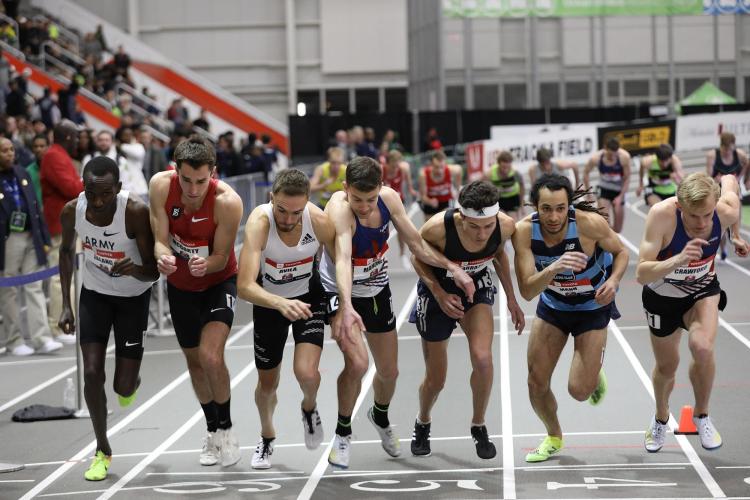U.S. Olympic sports earn failing grade for self-governance

A new study ranks U.S. Ski and Snowboard No. 1 out of 47 Olympic sports for self-governance. Track and Field ranked second. (Credit: U.S. Ski and Snowboard)
The organizations charged with overseeing U.S. Olympic sports from the elite level down to the youth level earned an average score of 58—a failing grade—for self-governance in a new evaluation published Tuesday by CU Boulder researchers.
Overall rankings of the 47 Olympic national governing bodies (out of 100)
81 Ski and Snowboard
78 Track and Field
71 Equestrian
67 Weightlifting
66 Figure Skating
65 Curling
64 Sailing
64 Soccer
63 Hockey
63 Volleyball
63 Rugby
62 Rowing
62 Wrestling
61 Speed Skating
61 Field Hockey
61 Triathlon
61 Water Polo
61 Gymnastics
60 Bowling
60 Cycling
60 Taekwondo
60 Boxing
60 Fencing
59 Diving
58 Luge
57 Water Ski
57 Bobsledding
56 Archery
56 Swimming
55 Judo
55 Baseball
54 Table Tennis
54 Karate
53 Shooting
53 Badminton
53 Synchro
53 Basketball
53 Canoe
52 Team Handball
52 Softball
51 Racquetball
49 Pentathlon
48 Biathlon
47 Squash
44 Roller Sports
44 Tennis
41 Golf
Of 47 national governing bodies (NGBs) assessed, U.S. Ski and Snowboard ranked No. 1 with a score of 81 out of 100, while USA Golf ranked last with a score of 41.
“If we were scoring them on letter grades, the best we saw was a B-minus and there were a lot of Cs, Ds and Fs,” said lead author Roger Pielke, director of the Sports Governance Center at CU Boulder. “That should not be acceptable for organizations that ultimately oversee our children.”
The study, published in the peer-reviewed journal European Sport Management Quarterly, comes at a time when the governance of Olympic sports is under increased scrutiny due to recent scandals involving sexual abuse, gender discrimination and bribery. U.S. Senator Cory Gardner (R-Colo.) and U.S. Rep. Diana DeGette (D-Colo.) recently introduced legislation calling for reform.
Established by Congress in 1978, NGBs are nonprofit federations which fall under the U.S. Olympic Committee. They’re responsible for selecting and sending teams to the Olympic games and supporting the growth of the sport.
“Every kid who participates in gymnastics or soccer or baseball or ski team is almost certainly in a local organization that falls under one of these NGBs,” said Pielke.
U.S. exceeds international counterparts
For the study, researchers spent two years using publicly available data to look at 36 measures across four categories, including: transparency (how easy it is for the public to get information about the NGB); democratic process (how decisions are made and who makes them); checks and balances (ensuring that no one official or department has absolute power); and solidarity (which includes things like ethics guidelines and support of grassroots sports).
They did not evaluate Paralympic sports, due to a lack of publicly available data.
The researchers also did not specifically assess details like team performance, player compensation or sexual misconduct policies—although good governance can trickle down to influence all of these, said Pielke.
Only two national governing bodies—U.S. Ski and Snowboard and USA Track and Field—met the minimal threshold of good governance recommended for international organizations.
“If you are a parent spending thousands of dollars on these sports, you probably want to be sure they are being overseen by competent national bodies,” said Pielke. “In some cases, that may not be the case.”
On the upside, U.S. national governing bodies ranked far better than their international counterparts (such as the Federation Internationale de Football Association, or FIFA) which are charged with preserving the integrity of sport on a global scale. A previous study measured them using the same criteria—known as the Sports Governance Observer criteria—and found that among 34 evaluated, the median score was 46.3.
“Compared to other nations, U.S. NGBs are not doing bad, but there is clearly scope for improvement, particularly around governing structures and transparency of information,” said co-author Spencer Harris, assistant professor of sport management at University of Colorado Colorado Springs.

USA Track and Field ranked No. 2.
A snapshot in time
Pielke notes that the new study has limitations.
Because the data took time to acquire and publish, it is a “snapshot in time” rather than a real-time assessment.
And the ranking fails to consider the wide range of resources—including size and money—that NGBs have at their disposal.
For instance, U.S. Soccer reported revenues of $266.4 million and USA Golf reported revenues of $207 million in 2016, while USA Team Handball reported revenues of just $347,825.
In future assessments, higher expectations of good governance should be set for those with more resources, the authors suggest.
NGBs are unique in that that are mandated by Congress and operate as nonprofits but sometimes have very large budgets and highly-paid CEOs, said Pielke, adding that historically, little attention has been paid to how they govern themselves.
But recent scandals—including the USA Gymnastics sexual abuse scandal and allegations of gender discrimination within U.S. Soccer—have changed that.
Ultimately, Pielke would like to see an independent body use an expanded and real-time assessment tool to assess NGBs every two years.
“There is a lot more attention being paid right now to these organizations that have historically flown under the radar,” said Pielke. “We hope this paper contributes to the discussion of how they are doing in their governance and what they can do better.”


